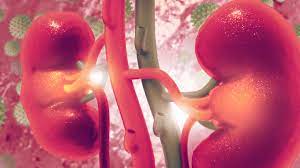Urinary tract infections (UTIs) account for over 3 million emergency department (ED) visits annually and remain one of the most common indications for antibiotics. The 2010 Infectious Diseases Society of America (IDSA) guidelines recommend fluoroquinolones (FQs) as first-line therapy for acute uncomplicated pyelonephritis (AUP) if the prevalence of Escherichia coli resistance is <10%. However, since the guideline’s publication, E. coli FQ-resistance rates now exceed 20% in many US locations. Additionally, FQs are increasingly associated with serious AEs (SAEs) as well as collateral damage through the promotion of bacterial resistance. The U.S. FDA added “Boxed Warnings” describing risks of peripheral neuropathy and central nervous system effects while strengthening previous warnings regarding tendinopathy and hypoglycemia. Trimethoprim-sulfamethoxazole (TMP-SMX) has been used for decades for the treatment of AUP; however, E. coli resistance rates have exceeded 20% in most US communities for many years and IDSA guidelines recommend against its use. Due to the increasing prevalence of FQ and TMP-SMX resistance, which now exceed thresholds recommended for abandoning empiric administration of an antibiotic class, IDSA guidelines stress the need to evaluate alternative regimens.
There remains a significant evidence gap in determining the most effective cephalosporin for treating pyelonephritis in patients discharged from the ED. The impact of this project will be twofold. First, it will build on our previous research and contribute to the literature supporting cephalosporins as effective treatment options for acute pyelonephritis. Second, our proposed multi-center study, which compares specific cephalosporin antibiotics, will address the ongoing debate by identifying the most effective cephalosporin for treating acute pyelonephritis.
The outcomes of the proposed study are:
- The primary outcome is to compare the treatment failure rates between different generations (e.g., 1st, 2nd, 3rd) of cephalosporins in adult ED patients ≥18 years of age with acute pyelonephritis.
- Secondary outcomes include:
- Treatment failure rates between cephalosporins (e.g., cephalexin versus cefdinir, cefdinir versus cefpodoxime).
- Necessity to change antimicrobial treatment based on culture and susceptibilities
- Days of antibiotic coverage,
- Return ED visit for UTI within 14 days of discharge, and
- Hospital admission with UTI as the primary diagnosis within 14 days of discharge.

